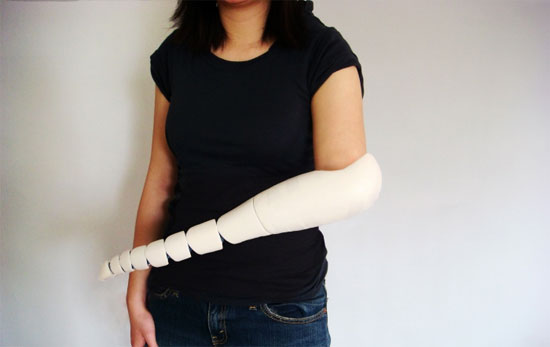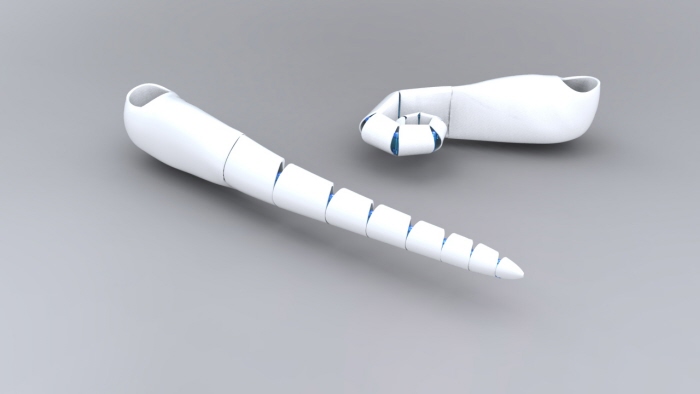Prosthetic Arm Features Flexible Tentacle Design
Most prosthetic limb replacements focus on returning regular movements to those who need them. Prosthetic legs move in a natural way, or as best as they can, while prosthetic arms usually have a regular five-fingered hand at the end, helping those who have lost a limb use their artificial ligament in a more natural fashion. But, when a student is asked to "push the boundaries" of upper-limb prosthetic design, you shouldn't expect to find a design you'd find in the box.
Kaylene Kau's robotic prosthetic arm design doesn't have a hand at the end, nor does it have five fingers. Instead, it focuses on a more tentacle-like approach. The arm is powered by a small motor, and there's a few wires inside to let the artificial appendage function. As you can probably already guess, the end of the arm will actual curl upwards, or downwards, depending on how the person wearing the prosthetic wants to grab something.
[via DVICE]


